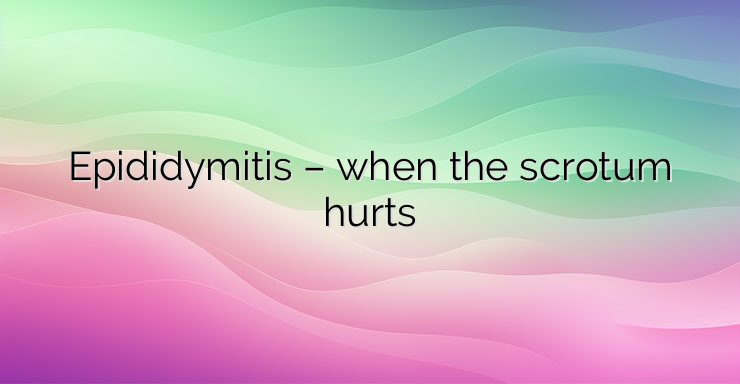1. What is epididymitis? Epididymitis is an inflammation, most often infectious, of the epididymis – a curved tube located on the back surface of the testicle. The etiology is mainly bacterial, the incidence is mainly in men between 20 and 39 years of age. In children, it develops less often, mostly after trauma, less often due to infection. Epididymitis can be present at the same time as orchitis (inflammation of the testicles), which is called epididymorchitis. According to the duration of symptoms, epididymitis is acute, subchronic and chronic. 2. What are the symptoms of epididymitis? Acute symptoms include pain and swelling (most often unilateral) in the scrotum. It is possible for the pain to start low in the back and then move down into the scrotum. Pain during urination and discharge of bloody ejaculate are grounds for suspecting epididymitis. Fever, nausea and vomiting are non-specific symptoms. In chronic epididymitis, pain and discomfort persist for more than three months. Its symptoms can vary widely – it can be unilateral or bilateral; moderate to severe pain; may be aggravated by certain activities, including ejaculation; on palpation, the epididymis may be enlarged or normal in size. 3. What are the causes of epididymitis? Pathogenic agents most often reach the epididymis, passing through the genitourinary tract through the urethra, prostate and vas deferens. More often, the bacteria lodges in the prostate, where it causes prostatitis. In rarer cases, pathogens can reach the epididymis with the bloodstream. In sexually active men, the most common causes are sexually transmitted infections – Chlamydia trachomatis and Neisseria gonorrhoeae. When practicing unsafe anal sex, it is possible to get Escherichia coli into the urinary tract, and accordingly – to develop bacterial epididymitis. Cases of epididymitis caused by fungi of the genus Mycobacterium, some enteroviruses and adenoviruses, the mumps virus, mycoplasmas and mycobacteria are less common. NEWS_MORE_BOX Sterile epididymitis (inflammation without infection) occurs when, during urinary reflux, urine passes through the vas deferens and reaches the epididymis. Genitourinary surgery also carries a risk of epididymitis, as does urethral catheterization. Amiodarone (a drug used to treat heart arrhythmia) is also known to cause epididymitis. 4. How is the diagnosis made? Diagnosing epididymitis can be difficult and should only be done by a urologist. Ultrasound examination is done to differentiate epididymitis from testicular torsion. Computed tomography and nuclear magnetic resonance are used to differentiate epididymitis from a number of clinically similar conditions – cysts or tumors in the testicles, the presence of fluid or gangrene in the swollen testicle. Urine and urethral exudate culture, Gram stain, and blood count may be necessary.Confirmation of sexually transmitted infections such as chlamydia may require additional testing for HIV, syphilis, hepatitis, and more. Sexual partners should also be notified. 5. What is the treatment for epididymitis? In cases of acute epididymitis caused by sexually transmitted pathogens, treatment is with azithromycin, ceftriaxone, or tetracycline or doxycycline. Enteropathogenic bacteria (E. coli) are affected by fluoroquinolones – ofloxacin and levofloxacin. Fluoroquinolones and tetracyclines are avoided in patients under 18 years of age. Co-trimoxazole and penicillins or cephalosporins are recommended for them. It is good to consider local differences in antibiotic susceptibility. If mumps is present, the pain is relieved by applying analgesics or ice. Non-infectious epididymitis may require the administration of anti-inflammatory agents.


Leave a Reply